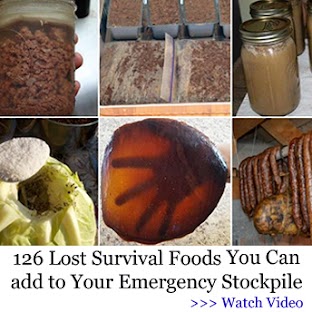We are now three to five generations removed from the rural life that helped make America great. We have migrated to big cities and left our self-sustained lives behind. These mega-cities have caused our general well-being to decline, with suicide rates increasing across the world. Crowded conditions and economic problems have led to rampant crime, pollution, and a dog-eat-dog mentality.
You will find that most of these tips will save you money and some will even save you time. The closer you get to true self-sufficiency you will save more and more money. Many find that the money saved allows them to cut down on overtime or even quit work altogether, allowing them to truly be free from the system and to become a homesteader. Saving money comes hand in hand with self-sufficiency and homesteading. Your labor is much cheaper than someone else’s and the money you save from gas and utility bills will go a long way towards paying down debts or buying more equipment for your homestead.
Here’s a list of 52 things you can do to be more self-sufficient. You would be one busy beaver, but you could even try doing one a week and in a year you will be closer to self-sufficiency than you ever thought possible. I recommend you learn the basics of your current project before moving on to the next.
1. Plant your own vegetable garden.
2. Change your own oil on your car or truck.
4. Collect and use rain water instead of municipal or well water.
5. Supplement your house’s heating system with solar heating panels.
6. Supplement your hot water needs with a solar water heater.
7. Mulch your garden with local organic mulch instead of store bought products.
8. Raise your own rabbits with worm beds underneath.
9. Use home-made compost and free manure to enrich your garden’s soil.
10. Grow non-hybrid vegetables and save the seeds for next year’s planting.
11. Grow potatoes and save the fingerlings for next years planting.
12. Use biointensive gardening techniques to grow lots of vegetables in small places.
13. Build a greenhouse to extend your growing season.
14. Build a root cellar (above or below ground) to store your harvest.
15. Start a small orchard for a variety of fruits.
16. Learn how to preserve food by canning.
17. Raise bees to help pollination and for honey.
18. Raise chickens for meat and eggs.
19. Raise sheep for wool and meat.
20. Raise goats or a dairy cow for dairy products.
21. Preserve vegetables by sun drying them.
22. Spin wool into yarn for making clothes.
23. Make your own furniture out of tree branches.
24. Preserve vegetables by freezing them.
25. Grow herbs for cooking and medicinal purposes.
26. Use edible wild plants to supplement one’s diet (Find a guide for your area first!).
27. Use containers to grow vegetables in small places.
28. Use chicken manure (composted) to help fertilize your garden.
29. Use, use and reuse as much as possible before throwing away.
30. Conserve electricity whenever possible.
31. Tune-up your own car or truck.
32. Sharpen your own tools.
33. Build your own home or shed.
34. Grow grapes for preserves or raisins or make your own wine.
35. Build a pond and raise fish for food.
36. Use solar and wind power to supplement your energy needs.
37. Learn how to use a welder.
38. Use clothes lines to dry clothes instead of a mechanical dryer.
39. Grow grains to feed your own livestock.
40. Grow alfalfa to return nitrogen to the soil.
41. Use a generator for emergency and supplemental power.
42. Dig or drive your own well.
43. Bake your own bread.
44. Do your own plumbing.
45. Do your own electrical work.
46. Run a small business from your home.
47. Barter goods and services with your neighbors.
48. Use a push mower instead of a gas or electric mower, or let the goats handle it.
49. Use a bicycle (whenever possible) instead of a motorized vehicle.
50. Make vegetables a large part of your diet.
51. Make your own syrup from Maple trees as a sugar substitute.
52. Supplement your diet by hunting game.







